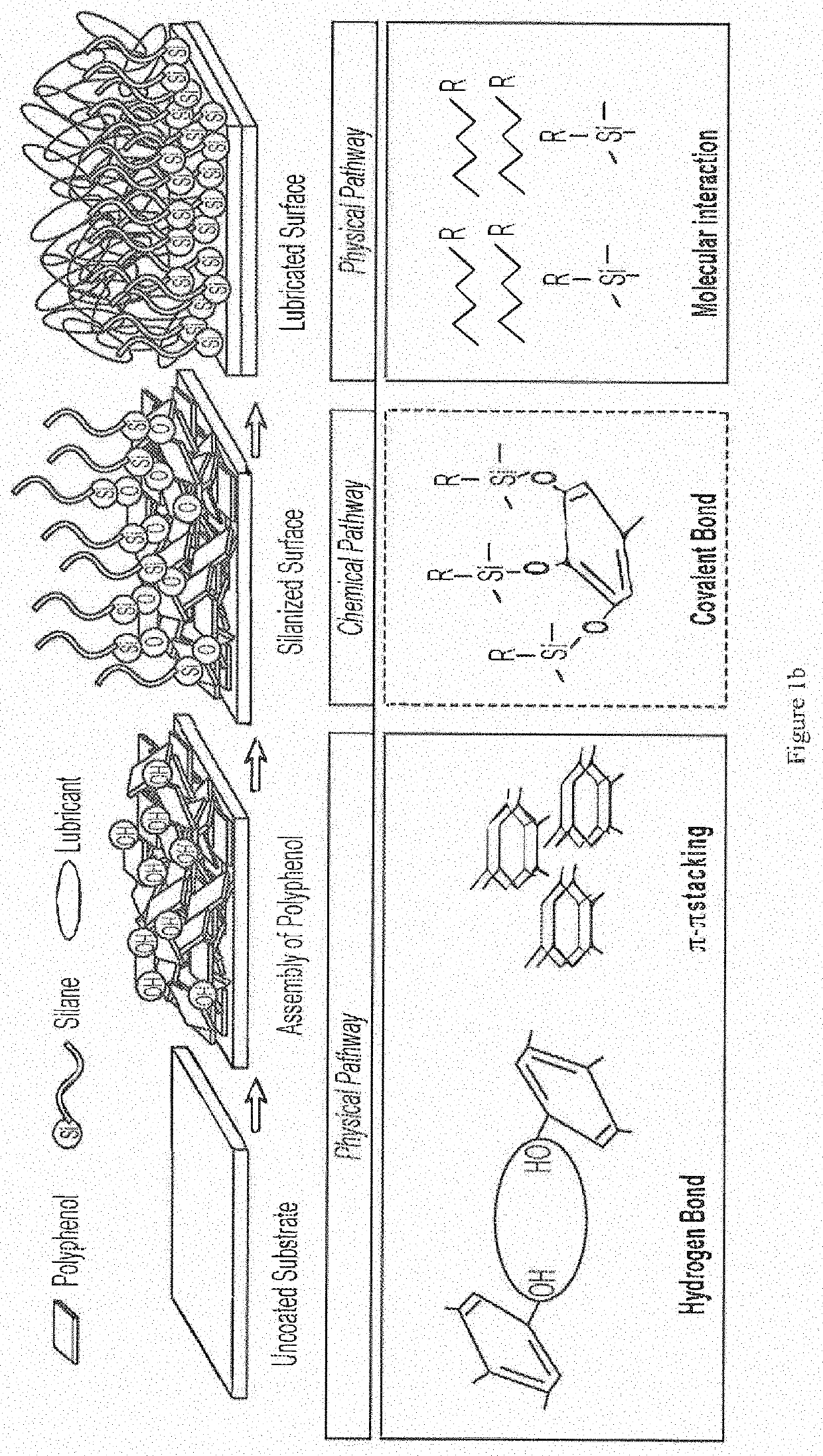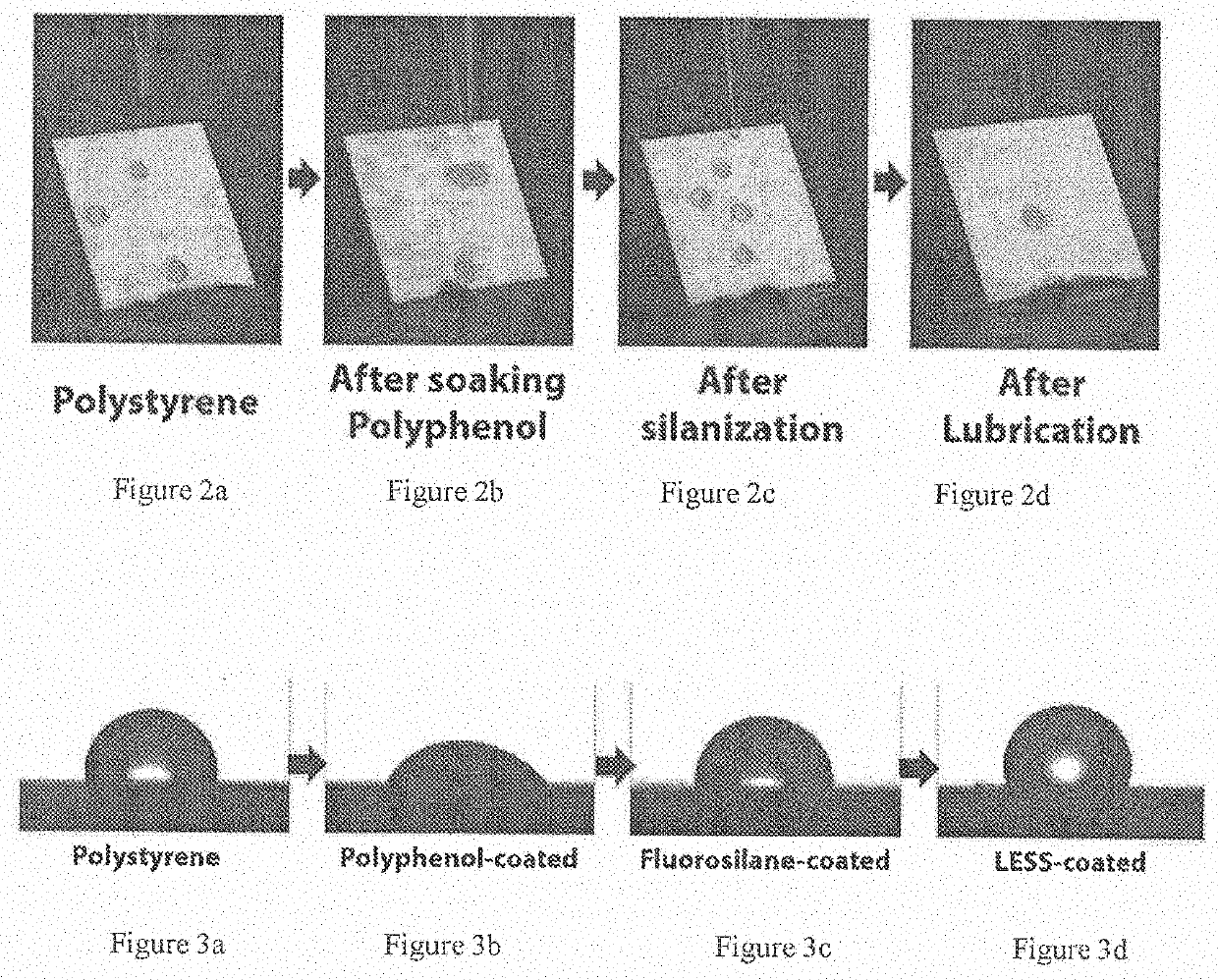Ostomy bag with a slippery surface
a technology of slippery surfaces and ostomy bags, which is applied in the direction of surgery, coatings, catheters, etc., can solve the problems of hazardous chemicals, large labor and time, and complex process of engineering surfaces fabricated with cleanroom fabrication
- Summary
- Abstract
- Description
- Claims
- Application Information
AI Technical Summary
Benefits of technology
Problems solved by technology
Method used
Image
Examples
examples
[0055]The following examples are intended to further illustrate certain preferred embodiments of the invention and are not limiting in nature. Those skilled in the art will recognize, or be able to ascertain, using no more than routine experimentation, numerous equivalents to the specific substances and procedures described herein.
[0056]Fabrication Process of Liquid lubricant-Entrenched Smooth Surfaces
[0057]The polyphenol layer was formed by a soaking process. Hydroxyl groups are successfully created on the substrate with this layer. As a demonstration, tannic acid was used to form the polyphenol layer directly on a surface of a smooth substrate. Tannic acid was used at a concentration of 2 mg / mL in deionized water to form the polyphenol layer directly on various substrate surfaces including on polystyrene, polyvinyl chloride, and polypropylene. The coating process alternatively can be carried out under a mildly alkaline, saline solution (e.g., pH ˜8) by the addition of sodium chlor...
PUM
| Property | Measurement | Unit |
|---|---|---|
| roughness | aaaaa | aaaaa |
| thickness | aaaaa | aaaaa |
| thickness | aaaaa | aaaaa |
Abstract
Description
Claims
Application Information
 Login to View More
Login to View More - R&D
- Intellectual Property
- Life Sciences
- Materials
- Tech Scout
- Unparalleled Data Quality
- Higher Quality Content
- 60% Fewer Hallucinations
Browse by: Latest US Patents, China's latest patents, Technical Efficacy Thesaurus, Application Domain, Technology Topic, Popular Technical Reports.
© 2025 PatSnap. All rights reserved.Legal|Privacy policy|Modern Slavery Act Transparency Statement|Sitemap|About US| Contact US: help@patsnap.com



